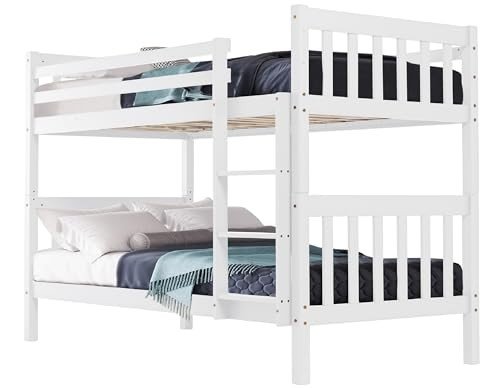What's The Most Common Kids Bunkbed Debate Isn't As Black And White As You May Think
Title: The Ultimate Guide to Kids Bunk Beds
Introduction
As children grow, so does their requirement for area and storage services. Bunk beds are an excellent method to make the most of area while providing an enjoyable and practical sleeping plan for your kids. This comprehensive guide will explore the numerous types, benefits, security factors to consider, and FAQs related to kids bunk beds.
I. Types of Kids Bunk Beds
- Requirement Bunk Beds: These are the most typical type, including 2 twin-sized beds stacked on top of each other.
- Futon Bunk Beds: The bottom bunk is changed with a futon, offering a sofa and a bed in one piece of furnishings.
- Twin-Over-Full Bunk Beds: The bottom bunk is larger, accommodating a full-sized bed mattress, while the leading bunk is a twin.
- L-Shaped Bunk Beds: These include two beds put perpendicularly, offering more floor space beneath.
- Loft Bunk Beds: A single bed is put on a raised platform, leaving room for a desk, play area, or storage underneath.
II. Advantages of Kids Bunk Beds
- Space-Saving: Bunk beds are perfect for smaller sized bed rooms, maximizing floor space for other activities and furnishings.
- Fun and Exciting: Children often enjoy the novelty and adventure of climbing to their own personal sleeping area.
- Cost-Effective: Purchasing one bunk bed is more budget-friendly than purchasing two separate beds.
- Versatile: Many bunk beds can be separated into two separate beds as children grow older or when space permits.
- Integrated Storage: Some bunk beds feature integrated storage services, such as drawers, desks, or shelves.
III. Safety Considerations
- Durable Construction: Ensure the bunk bed is made from durable, durable products and has a safe ladder for safe access.
- Correct Spacing: Gaps in between the mattress and the frame should be less than 3.5 inches to prevent entrapment.
- Suitable Height: Select a bunk bed with an appropriate height for your child, considering their age, size, and ability to go up and down securely.
- Secure Mattresses: Use the proper size mattress and secure it to the bed frame to prevent it from shifting during sleep.
- Guardrails: Ensure guardrails are installed on both sides of the top bunk and are at least 5 inches higher than the top of the mattress.
IV. FAQs
- What is the ideal age for a child to sleep on the leading bunk? herbertslemmer.top is generally suggested to wait until a child is at least 6 years of ages before allowing them to sleep on the top bunk.
- Can bunk beds be separated into 2 separate beds?Yes, some bunk beds can be taken apart and converted into 2 separate beds.
- How much space is required between the bottom of the top bunk and the top of the bottom bunk?A minimum of 2 feet 8 inches is suggested for head clearance on the bottom bunk.
- Are bunk beds safe for children?When effectively assembled and utilized, bunk beds are safe for children. Constantly follow safety guidelines and ensure your child comprehends the rules for using the bunk bed.
V. Conclusion
Kids bunk beds are a practical and fun solution for taking full advantage of space and offering an unique sleeping experience for your children. By considering the various types, advantages, and safety factors to consider, you can make an informed choice when choosing the ideal bunk bed for your family.
